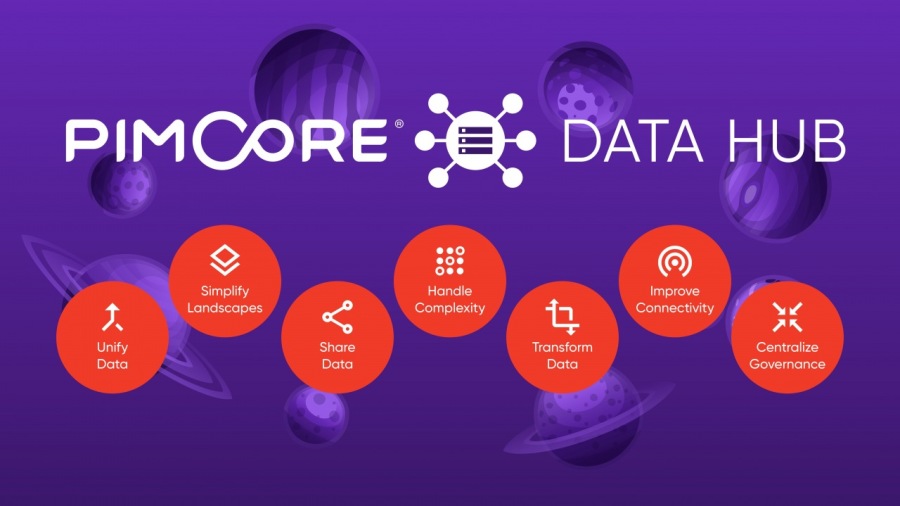Why Master Data Management Lies at the Heart of Supply Chain?
A sound MDM solution can help supply-chain managers to achieve data completeness, consistency, coherence and compatibility. Supply chain organizations need to be responsible for master data about customers, products, locations, vendors, and suppliers.

Master Data Management is the future of Supply Chain Management
1. A single source of truth in the ever-evolving data landscape
With more data than ever at your fingertips, how can you make sure you have the right insights to make truly informed decisions? Data has expanded across multiple touchpoints. With increasing dependency, escalated complexity, and sheer volume of data in the present day; a consolidated platform for its synchronization and centralization is imperative. MDM helps in consolidation and cross-reference of attributes. and cleansing and validation of information. It provides a precise, all-inclusive depiction of customers, products, suppliers, and partners.
Consider this: products move first from suppliers manufacturing units to the warehouse, then get further transported to retailer’s storage and finally to store shelves where customers buy the product. With the help of MDM, information like barcode, description, price, size, color is standardized and made accessible to everyone across the value chain. This allows data to move faster, more accurately, and with better efficiency.
2. Homogeneity and transparency across the organization
Siloed departments remain a big issue in supply chain design since it is a major factor in failing data visibility. This, in turn, is a crucial drawback since a variety of decisions and functions rely on visibility, and bringing together all business systems and merging data across enterprises is the first step towards transparency.
A wide-ranging MDM strategy can act as a communications bridge between the myriad supplier systems, ERPs, and CRM systems. All the attributes are contained in the system (like product description, barcode, vendor pack quantity, warehouse pack quantity, cold chain requirements, replenishment methods, the shelf life of the product, size, color, MRP and so on). Consistent, reliable end-to-end data is the key and the cumulative collection and screening of all this information ensures utmost transparency.
During mergers and acquisition, MDM is especially instrumental in the on-boarding of new partners, suppliers, systems, and products onto the platform. The better the transparency, the more convenient it is to identify revenue-generation and cost-cutting opportunities.
3. Accurate prediction and optimal inventory management
Inventory management and forecasting go hand-in-hand. When implemented correctly, together they can increase fill rate, with better in-stock handling in brick and mortar shops, facilitate proper storage in warehouse and store, enable faster movement of goods, and increase efficiency of distribution channels. This allows companies to keep track of the availability of supplier stocks, meet customers’ year-round requirements, and address issues that can impact inventory up-keep, such as seasonal variations. By ensuring timely access to information, MDM reduces costs, increases order-fulfillment rates, and improves customer satisfaction, thereby decreasing the burden on inventory. With improved efficiency and inventory monitoring, it also provides a single source of truth for predictive and prescriptive analysis and planning.
4. Assistance in global operations
Global operations welcome opportunities and challenges in equal measurement. With greater customer-reach comes new competition and regulatory compliances. A substantial consequence is data proliferation. With growing value chain, number of nodes in between also increases, and data handling becomes difficult amongst internal parties. Any inconsistency in it can result in major losses.
Supply chain risk management (SCRM) controls are essential in such cases to comply with global trade agreements, tariffs, legalities, regulations, social norms etc. Through coupling with standardized supply chain data pools such as Global Data Synchronization Network (GSDN), MDM facilitates smooth information exchange and accessibility between all parties. It enables data standardization and improved collaboration amongst both internal and external parties, reduced administrative labor, accurate financial data and faster payment for suppliers.
5. Smart management and sustainability
In an era of interconnected businesses, a fragmented approach towards managing complete supplier lifecycle across multiple business units and regions is outdated. A process-driven workflow involving visualizing delivery routes, inventory optimization, the productivity of assets, and estimating future demands is the solution to the crisis of growing operational complexities and costs. Agile self-service access to trusted data, real-time analytics, consent management, and holistic data governance can address the rising challenges in SCM.
Artikel von Rahul Singh
Blog ansehen
Pimcore, the leading open-source platform for data and customer experience management, has released ...

Data culture is the new normal. A data-driven culture empowers organizations to innovate faster, con ...

Data is often referred to as the new oil of the digital economy. The comparison may not be true in a ...
Diese Stellen könnten Sie interessieren
-

Mitarbeiter Küche in Teilzeit
Gefunden in: Talent AT C2 - vor 6 Tagen
McDonald's Österreich Walserberg, Österreich NebenberuflichCompany Description · Als weltweiter Marktführer im Bereich der Systemgastronomie bieten wir dir Arbeit in deiner Nähe, individuelle Förderung, flexible Arbeitszeiten und überdurchschnittlich gute Aufstiegsmöglichkeiten innerhalb des Unternehmens. Klingt gut? Dann bewirb dich für ...
-

Abteilungsleiter Logistik-Spedition
Gefunden in: Adzuna AT C2 - vor 1 Tag
TTI Personaldienstleistung GmbH & Co KG Wolfurt, ÖsterreichABTEILUNGSLEITER LOGISTIK-SPEDITION (M/W/D) · Arbeitsort: Wolfurt · Gehalt: ab EUR 4.000,- · Arbeitszeit: Vollzeit · Branche: Handel · Arbeitsbeginn: ab sofort · Du hast gerne den gesamten Überblick, Spaß am Organisieren, stets immer alles im Griff und bist talentiert darin, das ...
-

Facharbeiter:in Ober- und Tiefbau
Gefunden in: Talent AT C2 - vor 1 Tag
ÖBB Bruck an der Mur, ÖsterreichWir möchten neue Wege gehen. Und neue Wege schaffen. Heute. Für morgen. Für uns. · Werden auch Sie Teil des . · Damit wir ganz Österreich auch morgen mit neuenStrecken und Bahnhöfen schnell und zuverlässig ans Ziel bringen. Wir, das sindrund . Möglichmacher:innen der . · Wir sorg ...
Kommentare